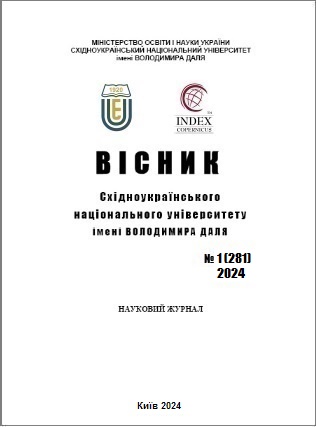Influence of the activation function of a linear neural network on the approximation of data from the main control channels of the acetic acid synthesis reactor
DOI:
https://doi.org/10.33216/1998-7927-2024-281-1-91-97Keywords:
neural networks, error back propagation, reactorAbstract
Artificial neural networks are built according to the principles of organization and functioning of their biological counterparts. They can solve a wide range of tasks of pattern recognition, identification, forecasting, optimization of management of complex objects. Further improvements in computer performance are increasingly associated with artificial neural networks, in particular neurocomputers. Nowadays, there are more intelligent systems for controlling technological processes in the chemical industry, which solve the tasks of adaptation, self-learning, and self-adjustment. To solve the problem of controlling technological processes in the chemical industry, multilayer linear neural networks with backpropagation of the error are used. To build a multilayer network, activation functions of the log (logsig) or hyperbolic tangent (tansig) type are often used for the intermediate layer, and a linear activation function (purelin) is used for the final layer.
In this work, statistical data of a real reactor for the synthesis of acetic acid, which works in a stationary mode in an acetic acid workshop, was used to construct and study the properties of a neural network. MATLAB 2021 software simulator environment was used for simulation. This program is recommended for simulating different neural networks with different number of neurons and different type of activation function.
In this work, a linear neural network with backpropagation of error with a fixed number of neurons of the first layer along the main control channels of the acetic acid synthesis reactor was constructed and investigated. The work investigated the influence of the activation functions of the first layer and the final layer of the neural network on the approximation of the data of the acetic acid synthesis reactor.
The architecture of the neural network, the first layer contains 23 neurons. The activation function of neurons changes. First it's the hardlim function, then the tansig function, then the logsig function and purelin. The second layer contains one neuron also with different activation functions: hardlim, tansig, logsig and purelin. Input change range [8900-9800].
Neural network modeling using MATLAB 2021 showed the success of the process of building and training a neural network and its satisfactory quality, which will allow the use of neural networks to control the technological processes of acetic acid synthesis and the prospects for further research in this direction.
References
1. Бойко С. Застосування нейронних мереж при автоматизації діагностики стану авіаційного генератора гвинтокрила.// С. Бойко, Є. Волканін, О. Городній, О. Борисенко, Л. Вершняк. Технічні науки та технології. 2018. № 3 (13), С.152-160.
2. Маковецька, С. В. Застосування штучних нейронних мереж для прогнозування динаміки технологічного процесу в умовах невизначеності / С. В. Маковецька, О. М. Мягшило // Сучасні методи, інформаційне, програмне та технічне забезпечення систем управління організаційно-технічними та технологічними комплексами: програма та матеріали ІІ Міжнародної науково-технічної Internet-конференції, 25 листопада 2015 р. [Електронний ресурс] К.: НУХТ, 2015. С. 188-189. - Режим доступу: https://nuft.edu.ua/page/view/konferentsii.
3. Гончаренко Т. А. Застосування технології штучних нейронних мереж для моделювання рельєфу будівельного майданчика/Т. А. Гончаренко// Управління розвитком складних систем: зб. наук. робіт / Київ. нац. ун-т буд-ва та архітектури; гол. ред. Лізунов П. П. Київ: КНУБА, 2017. № 29. С. 116-120.
4. Paredes-Astudillo Y.A. Comparing linear and non-linear modelling approaches of learning effects in 2-stage flow-shop scheduling problems/ Y. A. Paredes-Astudillo, V. Botta-Genoulaz, J. R. Montoya-Torres // IFAC Papers OnLine. 55-10 (2022), P. 842–847
5. Steentjes Tom R.V. Handling unmeasured disturbances in data-driven distributed control with virtual reference feedback tuning/ Tom R.V. Steentjes, Paul M.J. Van den Hof, Mircea Lazar // IFAC PapersOnLine. 54-7 (2021), P. 204-209.
6. Borg D. Neural networks as a diagnosing tool for industrial level measurement through non contacting radar type and support to the decision for its better application / D. Borg, F. F. Pinto, M. Suetake, D. Brandão// IFAC-PapersOnLine. 49-30 (2016).P. 349-354.
7. Topolski N.G. Computer Aided Fire safety Systems in Chemical Industries. / N.G.Topolski, V.S.Vatagin, // Mary Kay O’Connor Process Safety Center Symposium. -Proceeding.- October 24-25. 2000. Reed Arena. Texas A&M. University, College Station, Texas. P.348-349.
8. Baskin I.I. Quantitative chemical structure – property/activity relationship studies using artificial neural networks. / I.I. Baskin, M.I.Skvortsova, V.A.Palyulin, N.S.Zefirov // Foun-dations of Computing and Decision Sciences. 1997. Vol. 22, № 2. P. 107-116.
9. PorkujanOlga «Neuralnetworksimulationinrunningofaceticacidsyntesisunitwhilestart-up»/ OlgaPorkujan, ZhannaSamojlova. TEKA, Польща, AcademyofSciences (PAN), withregisteredofficesinWarsaw, 2013, P.188-192
10. Tronci S. A Gain-Scheduling PI Control Based on Neural Networks/ Stefania Tronci , Roberto Baratti// Hindawi Complexity Volume 2017, Article ID 9241254, 8 p.
11. Joschka W. Overcoming the modeling bottleneck: A methodology for dynamic gray-box modeling with optimized training data / Winz J. , Fromme F., Engell S. Process Dynamics and Operations Group, TU Dortmund University, Energy reports, Issue 10. November 2023, P. 396-406.
12. Moon Un-Chul. A comparative study of water wall model with a linear model and a neural network model/ Un-Chul Moon, Jaewoo Lim, Geon Go, Kwang. Y. Lee// Proceedings of the 19th World Congress The International Federation of Automatic Control Cape Town, South Africa. August 24-29, 2014, P.1446-1451.
13. Руденко О.Г. Штучні нейронні мережі: Навч. посібник. /О.Г.Руденко, Є.В. Бодянський– Харків: ТОВ “Компанія СМІТ”, 2006. 404 с.
14. Самойлова Ж.Г. Розробка математичної моделі технологічних процесів в реакторі синтезу оцтової кислоти/ Ж.Г.Самойлова// Eastern-European Journal of Enterprise Technologies, 5/2 (113 ), 2021, С.94-104.

